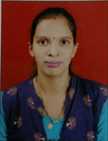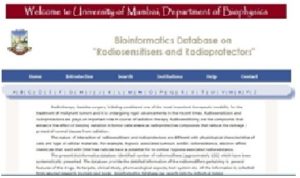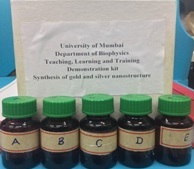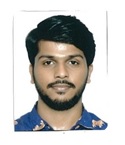Third Merit List Department of Biophysics 2025-2026
Second Merit List Department of Biophysics 2025-2026
First Merit List Department of Biophysics 2025-2026
Provisional Merit List 2025-2026
Admission Fees structure AY-2025-2026
Admission Notification AY-2025-2026
Admission Link Circular
Final Admission List 2024
Spot Admission
Second Merit List
First Merit list
Provisional General Merit List
Admission Video
Admission Banner 2024-25
M.Sc. Biophysics Syllabus As per NEP 2020
Admission Notification 2024-2025
Admission notifications 2024-2025
Admission notifications 2023-2024
National Science Day, 18-19th March 2021
Second merit list of admission to M.Sc. (Biophysics) by papers 2020-21.
First Merit list of admission to M.Sc. Biophysics 2020-21
Admission notice of M.Sc. (Biophysics) 2021
Admission Notification of M.Sc. Biophysics 2020-21
Advertisement of Project fellow- Dept of Biophysics
Revised time table of MSc Biophysics
Sample MCQ BP-CCT 403
Sample MCQ BP CCT 404
Sample MCQ BP-CCT 401
Sample MCQ BP-CCT 402
Webinar on career advice in Biophysics
Webinar on “Career planning in biophysics in the shadow of the pandemic”
ABOUT
THE DEPARTMENT OF BIOPHYSICS
Biophysics is a discipline that helps us understand the functioning of biological systems using theories and methods in physics, chemistry and mathematics, and computer modeling. The main emphasis of biophysics is on the quantitative analysis of the physical and chemical aspects of the functions of biological molecules, organisms, and entities. The techniques and methodologies that biophysics relies on are closer to Physics and Chemistry, but areas of application are diverse in the biological, medical, and related sciences.
The University of Mumbai at Vidyanagari Campus established the Department of Biophysics in 2001-2002. It offers M. Sc. (Biophysics) and Ph.D. (Biophysics). The department aims to make a high class of globally recognized “Centre of Excellence” in the field of Interdisciplinary areas of Science education training and research on the campus of the University of Mumbai. The quantitative regions covered under the M.Sc. course are Molecular and Cellular Biophysics, Radiation and Medical Biophysics, Biophysical Techniques, Bioinformatics, Molecular Modeling, X-ray Crystallography, and rDNA technology, and protein engineering, Environmental Biophysics, Nano-biophysics & Nanomedicine, etc. Primary emphasis is given to hands-on practical training for the learners.
Adjunct faculties, Scientists, and experts from other Research Institutes and University Departments actively participate in the teaching program. Scientists and Professors from different Institutes and universities are invited for seminars on specialized areas of Biophysics. The teaching and research laboratories in the department are well equipped with the latest equipment. The Department has a Library with over 500 books. Special efforts are taken to update the collections with the latest textbooks and scientific journals.
The students are provided with internet facilities to access relevant research in their area of interest and other disciplines. Every student must complete a research project during the M. Sc. program’s second year. The department takes special enforcement for the students who wish to appear for National Test for a junior research fellowship and lectureship and test conducted by UGC/CSIR and other National Institutes. Along with the teaching and research, the department also organizes social, cultural, and personality development programs, which facilitate students’ overall development. The department strives to receive grants from funding agencies like UGC, CSIR, DST, DBT, DRDO, DAE, etc.
ABOUT THE SUBJECT
Biophysics is the integration and application of physics and physical chemistry principles to explain and explore the form and function of living things. It is an interdisciplinary science that applies the principles of Physics, chemistry, math, and computer modeling principles to understand how biological systems work. Biophysics explains biological function in terms of molecular structures and their properties. It is a bridge between biology and physics. It is a highly fascinating and intellectual field and the very root of our existence. Karl Pearson originally introduced the term biophysics in 1892. Principles of physics have been used to explain some of the most fundamental processes in biologies, such as osmosis, diffusion of gases, and the function of the eye’s lens in focusing light on the retina. Biophysicists study how organisms develop, see, hear, think and live. They investigate how the brain processes and stores information, the heart pumps blood, muscles contract; plants use light in photosynthesis, genes switch on and off, and many other questions.
The foundations for the study of biophysics were laid down in the 19th Century by a group of physiologists in Berlin. The Berlin school of physiologists included Hermann von Helmholtz, Emil DuBois-Raymond, Ernst von Brücke, and Carl Ludwig. In 1856, one of Ludwig’s students, Adolf Fick, published the first biophysics textbook. But technology in physics had not sufficiently advanced at this time to study life forms in a straightforward way, such as at the molecular level. In the first half of the 20th Century, German scientists dominated biophysics. They studied electromagnetic fields and light and became mainly concerned with studying the effects of radiation on living things. The popularity of biophysics rose when the Austrian physicist Erwin Schrödinger published the book, What is Life? in 1944. This book was based on a series of public lectures. Schrödinger gave explaining the processes of living things through physics and chemistry. In it, he proposed the idea that there was a molecule in living things that contained genetic information in covalent bonds. This inspired scientists like James Watson and Francis Crick to search for and characterize the genetic molecule. With Rosalind Franklin’s X-ray crystallography research, they discovered the double helix structure of DNA in 1953. By the mid-20th century, biophysics programs had sprung up and gained popularity in other countries, and from 1950-1970, biophysics research occurred faster than ever before.
Biophysical methods are increasingly used to serve everyday needs, from forensic science to bioremediation. Medical imaging technologies, including MRI (Magnetic Resonance Imaging), CAT (Computed Axial Tomography) scans, etc., are the invention of Biophysics. Biophysics shares a strong bond with other advanced biological fields biochemistry, bioengineering, systems biology, nanotechnology, etc. Biophysics incorporates studying all levels of biological organization, from molecules to ecosystems. Sir JC Bose was the first Indian Biophysicist. His significant contribution to biophysics was demonstrating the electrical nature of the conduction of various stimuli (wounds, chemical agents) in plants, which were earlier thought to be of a chemical nature for the first-time action of microwaves in plant tissues and corresponding changes in the cell membrane potential, the mechanism of the effect of seasons in plants, the effect of the chemical impact on plant stimuli, and the effect of temperature. Another great Indian biophysicist G.N. Ramachandran is famous for the Ramachandran plot which is an elegant visual representation of secondary protein structure. Both of these scientists were Institution builders as well. JC Bose founded Bose Research Institute in Kolkata, whereas GNR established the Department of Biophysics at the University of Madras. Prof G. Ramachandran is also the founder of the Molecular Biophysics Unit (MBU, 1971) at the Indian Institute of Science, Bangalore. Another pioneer of Indian Biophysics is Prof. Girjesh Govil, from The Tata Institute of Fundamental Research, Mumbai. He is known for his research in Nuclear Magnetic Resonance (NMR) and semi-empirical quantum chemical theories. He was awarded the Shanti Swarup Bhatnagar Prize for Science and Technology, one of the highest Indian science awards, in 1978, for his contributions to chemical sciences.
CONTACT
Address:
Department of Biophysics, University of Mumbai, Vidyanagri, Santacruz (E), Mumbai India
Email id: head.biophysics@mu.ac.in
PROGRAMMES
P.G. Diploma in Biophysics (One year)
M.Sc. (Biophysics) As per NEP 2020 (Two Year)
M.Sc Biophysics Syllabus As per NEP 2020
COURSES & SYLLABUS
a) M.Sc (Biophysics) by Papers; b) PhD (Biophysics)
- Post graduate (M.Sc. by Papers, (choice-based credit system)):
The two-year M.Sc. (Biophysics) programme is prescribed according to the choice- based credit system of the University of Mumbai from the academic year 2016-17.
The chief areas covered under the program:
- Molecular and Cellular Biophysics
- Radiation and Medical Biophysics
- Advanced Biophysical Techniques
- Bioinformatics, Molecular Modeling & Drug Design
- Spectroscopy & Bio-crystallography
- Nanobiophysics & Nanomedicine
- Physiological Biophysics
- Environmental biophysics
- rDNA Technology & Protein Engineering
- Biostatistics and Biomathematics
Syllabus Structure
| Semester I | ||||
| Paper code | Course | Paper Nomenclature | Lectures/Practicals | Credit |
| 57111 | Course 1 | General Physico-Chemical Principles | 60 | 4 |
| 57131 | Course 2 | Basic Analytical tools in Biophysics | 60 | 4 |
| 57192 | Course 3 | Practical Lab Work | 15 | 4 |
| 57121 | Course 4 | Molecular and Cellular Biophysics | 30 | 2 |
| 57151 | Elective Course 1 OR | Biomolecular Hydrodynamic Methods | 30 | 2 |
| 57152 | Elective Course 2 | Recombinant DNA Technology and Protein Engineering | 30 | 2 |
| 57194 | Practical Elective Course 1 OR | Biomolecular Hydrodynamic Methods | 6 | 2 |
| Practical Elective Course 2 | Recombinant DNA Technology and Protein Engineering | 8 | 2 | |
| 57191 | Research Methodology | 60 | 4 | |
| Total | 22 | |||
| Semester II | ||||
| 57112 | Course 1 | Membrane Biophysics & Ion channels | 60 | 4 |
| 57122 | Course 2 | Radiation Biophysics | 60 | 4 |
| 57197 | Course 3 | Practical Lab Work | 60 | 4 |
| 57132 | Course 4 | Biochemistry | 30 | 2 |
| 57171 | Elective Course 1 OR | Biocrystallography & Magnetic resonance techniques | 60 | 4 |
| 57172 | Elective Course 2 | Proteomics | 30 | 2 |
| 57198 | Practical Elective Course 2 | Proteomics | 7 | 2 |
| 57173 | MOOCS | |||
| 57196 | On Job training (OJT) | 4 | ||
| Total | 22 | |||
| Semester III | ||||
| 57113 | Course 1 | Advanced Biophysical Techniques | 60 | 4 |
| 57123 | Course 2 | Nanobiophysics | 60 | 4 |
| 57133 | Course 3 | Practical Lab Work III | 60 | 4 |
| 57141 | Course 4 | Environmental Biophysics | 30 | 2 |
| 57161 | Elective Course 1 | Structural Biophysics | 30 | 2 |
| Practical Elective Course 1 OR | Structural Biophysics Practical Lab Work | 8 | 2 | |
| 57162 | Elective Course 2 | Medical Biophysics | 6 | 4 |
| 57163 | MOOCS | |||
| 57199 | Research Project (Literature review) | 4 | ||
| Total | 22 | |||
| Semester IV | ||||
| Course 1 | Physiological Biophysics | 60 | 4 | |
| Course 2 | Biomethematics & Biostatistics | 60 | 4 | |
| Course 3 | Elements of Bioinformatics | 60 | 4 | |
| Elective Course 1 | Nanomedicine | 60 | 4 | |
| Elective Course 2 | Advanced Microscopy and Single Molecule Biophysics | 60 | 4 | |
| Research Project | 6 | |||
| Total | 22 |
Detailed syllabus M.Sc I (PDF)
Detailed syllabus M.Sc II (PDF)
PROGRAM OUTCOME
The knowledge of this program will provide an intellectually enlarging experience to students. The courses attempt to teach critical thinking, problem solving, and communication skills that can be used throughout a life of learning. The program helps to prepare students and make them competitive to enter in the workforce or further their studies in research (Ph.D) at professional colleges, pharmaceutical / biomedical industries, medical schools, Universities etc.
After completing the M.Sc . in Biophysics Program at University department of Biophysics, the students will be able to acquire the following skills:
- Students will demonstrate proficiency in principles of physics, chemistry and mathematical concepts that are needed for a proper understanding of biological process.
- Students will be able to Integrate knowledge and skills of the physics, chemistry & mathematics with biology and to address research questions.
- Students will demonstrate knowledge of cell & molecular biology, methods in biophysics, radiation & medical biophysics, physiological biophysics, structure –functions of biological macromolecules, biomathematics and biostatistics, biochemistry & protein engineering, molecular modeling & drug design etc. .
- Students will show that they have learned laboratory skills, enabling them to purify and characterize biological samples using various spectroscopic and microscopic tools. They will be able to collect, evaluate and interpret scientific data, and employ critical thinking to solve problems in biology and supporting fields .
- Students will demonstrate knowledge of various spectroscopy, microscopy and other analytical tools that are used in biology
- Students will communicate scientific information in a clear and concise manner both orally and in writing.
- Student will identify and describe the impact of biophysics on society.
Program specific outcome (PSO) :
A Master’s degree of Biophysics will provides theoretically and practically a broad foundation in biophysics with particular focus on cell and membrane biophysics, advanced biophysical techniques, structural biology, radiation and medical biophysics, physiological biophysics, molecular modeling and drug design, environmental biophysics.
In particular, this study includes in depth learning about the structure and function of important biomolecules and cellular systems, biophysical tools as well as physiological biophysics. Students will also learn about methods of protein purification and characterization, measuring the effects of radiation on biological systems, understanding fundamental principles of various biophysical techniques (Fluorescence spectroscopy & Microscopy, UV visible, FTIR, NMR, ESR, Raman Spectroscopy and other light scattering) etc. This study will lead further towards problems in medicine, medical physics, use of techniques in radiation for cancer therapy and diagnosis, applications of various spectroscopy tools in biology and medicine.
During the study of this Master’s degree course, the students will also learn fundamental scientific working methods, for example, to work independently on a large-scale project, to design research project, to write scientific contents / research papers and presentation etc.
Course outcome (CO):
| Semester I | |||
| Paper code | Course | Paper Nomenclature | Course Outcome |
| 57111 | Course 1 | General Physico-Chemical Principles | General Physico-chemical principle: objectives of this course is fundamental understanding of physical, chemical principle which help for quantitative underrating of biological process. Course outcomes: By the end of this course the students should be able to develop an understanding of the process of biological system. |
| 57131 | Course 2 | Basic Analytical tools in Biophysics | Basic Analytical Tools in Biophysics: objective of this course is to familiarize students with various biophysical methods such electrophoresis, UV visible spectroscopy, fluorescence spectroscopy, circular dichroism, microscopy ( bright field, dark field, fluorescene, SEM, TEM etc). Course Outcome: By the end of the course the student able to understand basics principles of spectroscopic and microscopic techniques and their applications in biological and medical sciences. |
| 57192 | Course 3 | Practical Lab Work | |
| 57121 | Course 4 | Molecular and Cellular Biophysics | Molecular and Cellular Biophysics: objective of this is to understand fundamentals of various types of cells, their structure and function, physical aspects of cells and to understand structure and function, stability of biological macromolecules (enzyme, protein, lipids, nucleic acids etc). Course Outcome: By the end of this course, the students should able to understand the principles underlining cell function, cell differentiation, cell growth, cell communication and the structure of protein, lipid, carbohydrates. Techniques use to study protein stability, protein folding and significance in biological system etc. |
| 57151 | Elective Course 1 OR | Biomolecular Hydrodynamic Methods | |
| 57152 | Elective Course 2 | Recombinant DNA Technology and Protein Engineering | rDNA Technology & Protein Engineering: This course provides students to understand preparation, analysis and manipulation of DNA & RNA, construction of rDNA libraries, mutagenesis, methods of protein sequencing and chemical approach to protein engineering etc. Course Outcome: By the end of this course student able to learn manipulation of genetic materials, construction of recombinant DNA libraries, sequencing strategies of proteins. |
| 57194 | Practical Elective Course 1 OR | Biomolecular Hydrodynamic Methods | |
| Practical Elective Course 2 | Recombinant DNA Technology and Protein Engineering | ||
| 57191 | Research Methodology | ||
| Total | |||
| Semester II | |||
| 57112 | Course 1 | Membrane Biophysics & Ion channels | Membrane biophysics and Ion channels: The objectives of this course is students understand physics of membrane, membrane structure, function, lipid technology etc. Course outcomes: at the end of the course students should be able to understand various physical and chemical aspects of cell membrane, cell membrane functions etc. |
| 57122 | Course 2 | Radiation Biophysics | Radiation Biophysics : objectives of the course is to understand the interaction of radiation with matter, living system, biological effects of ionizing and non ionizing radiation etc. Assessment of radiation effects using various mathematical models. Course outcomes: by the end of course students will gain the basic principle of interaction of radiation with matter and living system, they will be familiar with the knowledge of ionizing radiation and its impact on biological system. |
| 57197 | Course 3 | Practical Lab Work | |
| 57132 | Course 4 | Biochemistry | Biochemistry: This course provides insight of biochemical pathways, signals, cellular level synthesis of biological macromolecules, gene expression in prokaryotes and eukaryotes etc. Course outcomes: By the end of this course the student able to discuss mechanisms of various pathways takes place in biological system, their impact on biological system, mechanism and regulation of gene expression |
| 57171 | Elective Course 1 OR | Biocrystallography & Magnetic resonance techniques | Biocrystallography & Magnetic Resonance Techniques: This course will provide basics principals and fundamental understanding of NMR and its various types, ESR, X-Ray diffraction techniques etc. Course outcomes: by the end of the course students will be familiar with fundamental understanding of magnetic resonance technique and their applications. |
| 57172 | Elective Course 2 | Proteomics | |
| 57198 | Practical Elective Course 2 | Proteomics | |
| 57173 | MOOCS | ||
| 57196 | On Job training (OJT) | ||
| Total | |||
| Semester III | |||
| 57113 | Course 1 | Advanced Biophysical Techniques | Advanced Biophysical Techniques: Objectives of the course is to make the students familiar with advanced biophysical techniques such as Differential Scanning colorimetry, Mass spectrometry, force spectroscopy, cryo electron microscopy, patch clamp techniques etc. Course outcomes: by the end of the course student will gain the knowledge of advanced biophysical techniques, they will understand basics principals and applications in biology and medicine. |
| 57123 | Course 2 | Nanobiophysics | Nanobiophysics: objectives of the course is to familiar the students with nanosciences and nanotechnology, understand basics principles of synthesis of nanostructures, nanotoxicology and application of nanostructures in medicine and biology. Course outcomes : By the end of course students will able to gain knowledge of nanomedicine, nanostructures. Various applications of metallic nanostructures in medicine and biology. |
| 57133 | Course 3 | Practical Lab Work III | |
| 57141 | Course 4 | Environmental Biophysics | Environmental Biophysics: Aim of the course is to know the importance of environment, life and environment, Electromagnetic radiation and environment etc. conductance of heart and mass transfer etc. Course outcomes: at the end of course student will able to familiar with environment and its importance to human being. |
| 57161 | Elective Course 1 | Structural Biophysics | Structural Biophysics: Objectives of the course is to make the students familiar with structural biology which deals with structural analysis of living material (formed, composed of, and/or maintained and refined by living cells) at every level of organization. Course Outcome: By the end of this course student able to understand structural analysis of living material (formed, composed of, and/or maintained and refined by living cells) at every level of organization. |
| Practical Elective Course 1 OR | Structural Biophysics Practical Lab Work | Structural Biophysics: Objectives of the course is to make the students familiar with structural biology which deals with structural analysis of living material (formed, composed of, and/or maintained and refined by living cells) at every level of organization. Course Outcome: By the end of this course student able to understand structural analysis of living material (formed, composed of, and/or maintained and refined by living cells) at every level of organization. |
|
| 57162 | Elective Course 2 | Medical Biophysics | Medical Biophysics: This course will provide basics of radiotherapy, nuclear medicine and diagnostics radiology, basics of radiation protection. Course outcomes: at the end of the course students will understand fundamental principles of radiation therapy, radio diagnosis , radiation protection and application radiation in medicine. Role of isotopes in medical diagnostics |
| 57163 | MOOCS | ||
| 57199 | Research Project (Literature review) | ||
| Total | |||
| Semester IV | |||
| Course 1 | Physiological Biophysics | Physiological Biophysics: this course will provide insight into functional aspects of various human organs, physical and chemical aspects of various organs. Course outcomes : at the end of the course student able to understand basics physiological function of various organs. |
|
| Course 2 | Biomethematics & Biostatistics | Biomathematics & Biostatistics: Objectives of this course is basic understanding of statistics and mathematics which help the students for quantitative prediction of biological data. Course outcomes: by the end of this course students understand basics concepts of statistics and mathematics such as mean mode, median, std deviation, types of hypothesis & tests, limits & functions, probability etc. |
|
| Course 3 | Elements of Bioinformatics | Elements of Bioinformatics, Molecular modeling and drug design: this course will provide fundamental understanding of bioinformatics, structural bioinformatics, molecular mechanics, denovo ligand and 3D QSAR Course outcomes : by the end of the course students able to gain knowledge of molecular modeling and drug design, they will able to discuss virtual screening etc. |
|
| Elective Course 1 | Nanomedicine | Nanomedicine: objectives of the course is to familiar the students with nanosciences and nanotechnology, understand basics principles of synthesis of nanostructures, nanotoxicology and application of nanostructures in medicine and biology. Course outcomes : by the end of course students will able to gain knowledge of nanomedicine, nanostructures. Various applications of metallic nanostructures in medicine and biology. |
|
| Elective Course 2 | Advanced Microscopy and Single Molecule Biophysics | Advanced Microscopy and Single Molecule Biophysics: Objectives of the course is to make the students familiar with advanced biophysical techniques such as Differential Scanning colorimetry, Super resolution Microscopy, force spectroscopy, cryo electron microscopy, patch clamp techniques etc. Course outcomes: by the end of the course student will gain the knowledge of advanced biophysical techniques, they will understand basics principals and applications in biology and medicine. |
|
| Research Project | |||
Ph.D. (Biophysics) Programme
The Ph.D. Degree (in Biophysics): involves submission of Dissertation / Thesis to the University based on the research conducted under the supervision of a faculty member (who are recognized teachers of the University for guiding students for Ph. D degree) working at the Department of Biophysics. Students with Master’s Degree (M. Sc) in Sciences (as per the University circular No. 441 of 2005 & VCD’s) are entitled to seek admission for Ph.D. programme of Biophysics.
Program outcome:
The Ph D program in Biophysics has been started in 2007-2008. The students having post graduate in Biophysics/ Biochemistry/Physics / allied branches of life sciences can enrolled for PhD course.
The PhD program is designed to prepare each student to actively participate in the development and growth in the field of biophysics at all levels in industry / teaching in Universities/ Institutes. The students research training enhanced by organizing seminars, discussions, invitation of world renowned Scientists/ Professors for special lecture, Journal club activity etc. The students will demonstrate depth knowledge of various biophysical tools such as fluorescence spectrophotometer, Raman spectrophotometer, FT-IR, Fluorescence Microscopy, UV Visible spectrophotometer, Fluorescence Microscope, Dynamic Light Scattering, Atomic Force Microscope (Bio AFM), Surface Plasmon Resonance Analyzer, single and 2-D gel electrophoresis. The research projects span across a broad range of topics covering various aspects of structure-function of biological macromolecules; nanostructure-biomolecule interaction; nanostructure based snake venom inhibitor; nanostructure based targated drug delivery system, tumor targeting proteins etc.
ELIGIBILITY & FEES
Eligibility for M.Sc
B.Sc. / B.Sc. (Hons) majoring in Biophysics/Physics/Chemistry/Biochemistry/Microbiology/ Biotechnology/ Forensics science/ Bioinformatics/ any branch of biology with chemistry or physics/ B. Tech (Biotechnology /Bioinformatics). A candidate must have secured minimum 50% marks at B.Sc. examination in the major subject for open candidates. For reserved candidates, University rules and regulation apply.
Fees Structure
The total numbers of seats are 20, out of which seats are allotted to reserve categories as per the rules and regulation of Govt. of Maharashtra and 3% seats are reserved for the students from other universities other than Mumbai University.
Revised Fee structure for M.Sc. courses (wef from the academic year 2009-2010)
| Sr No. | Fee | Part I | Part II |
| 1 | Tution | 17000 | 17000 |
| 2 | Form and Prospectus fee | 100 | 100 |
| 3 | Other fees/ Extracurricular activities | 250 | 250 |
| 4 | Caution money | 150 | 150 |
| 5 | Laboratory Deposit | 250 | 250 |
| 6 | Registration form fee | 25 | 25 |
| 7 | Project fee | 0 | 0 |
| 8 | Convocation Fee only for M.Sc. Part II | 0 | 0 |
| 9 | Registration fee for M.SC. Part 1 only | 1025 | 1025 |
| 10 | Library deposit | 250 | 250 |
| 11 | NSS | 10 | 10 |
| 12 | Laboratory fee | 21500 | 21500 |
| 13 | library | 1000 | 1000 |
| 14 | Gymkhana | 200 | 200 |
| 15 | Admission processing fee | 200 | 200 |
| 16 | Vice Chancellors Fund | 20 | 20 |
| 17 | Magzine | 100 | 100 |
| 18 | Identity Card | 80 | 80 |
| 19 | Group insurance | 40 | 40 |
| 20 | Student Welfare | 50 | 50 |
| 21 | University sports and cultural activity | 36 | 36 |
| 22 | Development fee | 800 | 800 |
| 23 | Utility | 250 | 250 |
| 24 | Computer/internet | 500 | 500 |
| 25 | E suvidha | 50 | 50 |
| 26 | Echarges | 20 | 20 |
| 27 | Disaster relief fund | 10 | 10 |
| 28 | University Entrepreneurship Development Cell Activity Fee (Rs. 5 For University and Rs. 5 for College) | 10 | 10 |
| Total | 43926 | 43926 |
Note: some fee heads may change time to time
Document verification: 400/- wherever applicable
Refundable deposit Caution Money: 150/-
Library Deposit: 250/-
Laboratory deposit: 400/-
Project fee: 2000/- (wherever applicable)
Registration fee for M.Sc. Part I only: 1000/-
Convocation fee only for MSc. Part II: 250/-
- NB. Foreign students will have to pay five times of prescribed fees. The fees collected in different heads be spend only for specified purpose for which it has been collected.
Fees are payable by cash in the Allahabad Bank, Kalina Branch, Wadia High School, Ground Floor, Opp. University Campus.
- Tuitions fees once paid are normally not refunded. However, tuition fees will be refunded if the candidates do not attend any theory/practical/seminar class. Application for refund of fees should be addressed to the Registrar, University of Mumbai in duplicate.
- No transference Certificate will be issued to the students who leave the Department, unless they clear all the dues.
Eligibility for PhD:
- Should have M.Sc. degree in Biophysics with minimum 55% marks.
- Candidates qualified in ICMR-JRF/DBT-JRF/CSIR-JRF/ GATE examination under Life Sciences/Biotechnology or PET Biophysics (University of Mumbai) can also apply.
Admission will be subject to their qualifying the departmental interview.
All the applications will be screened and candidates found suitable will be called for interview. Travelling Allowance is not payable by University Department of Biophysics and candidates have to make their own arrangement for stay at Mumbai. Merely fulfilling of the minimum requirements stipulated in the notification would not automatically entitle a person for selection. The decision of the department in this regards shall be final. Applications will be accepted only upon advertisement of PhD notification displayed on Mumbai University website.
STAFF
FACULTY
 Name: Dr.Mrs. Varsha Kelkar-Mane (MSc, PhD FRSC, FISC)
Name: Dr.Mrs. Varsha Kelkar-Mane (MSc, PhD FRSC, FISC)
Designation: Professor and I/c Head
Area of specialization: Bioprospecting and Nano-Biotechnology
Subjects taught: Biochemistry, Bioprocess technology, Nanotechnology.
Contact details: drvkelkar@mu.ac.in
Profile
 Name: Dr. Vinod Jaiswal
Name: Dr. Vinod Jaiswal
Designation: Assistant Professor (Ad-hoc)
Area of specialization: Biophysics, Nano Biophysics
Subjects taught: Biophysics, Molecular Biology, Radiation Biology, Biochemistry
Contact details: vinod.jaiswal@biophysics.mu.ac.in
Adjunct faculties:
 Prof. B. S. Rao, PhD
Prof. B. S. Rao, PhD
Contact Details: bsrao2005@rediffmail.com
Dr. Badanidiyoor Srinivasa Rao joined as an Adjunct Professor in the Department of Biophysics after superannuation from BARC, Mumbai. He started his service as a scientific officer at BARC after graduating from the 12th batch of BARC training school in 1969. He obtained his Ph.D. in biophysics in 1978 from the erstwhile Cancer Research Institute. During his post-doctoral studies (1980-82), he undertook mammalian cell radiobiology in the department of Therapeutic Oncology MCMC, Wisconsin, USA. His research activities have been mainly in the biophysical aspects of radiation quality, radiobiology, radiation cytogenetics, and mutagenesis. He was a recipient of the Madam Marie Curie fellowship of the Europe Commissionerear 1995 and worked on the translocation essay application in bio dosimetry at the University of Leiden, The Netherlands. He has served as an IAEA expert in biodosimetry. He was honored to be on the Editorial Board of the International Journal of Radiation Biology (UK). He also edited the Journal of Radiation Protection and Environment and EMSI newsletter for several years. He retired from BARC in 2005 as the Head of Radiological Physics and Advisory Division.
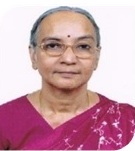 Prof. S. Sivakami, PhD
Prof. S. Sivakami, PhD
Contact Details: sivakami_s2000@yahoo.com
Prof. (Mrs.). S. Sivakami joined as an adjunct professor at the Department of Biophysics after superannuation from the Department of Life Sciences, University of Mumbai. She obtained her Ph.D. from the Christian Medical College, Vellore, Tamil Nadu. She had postdoctoral training from the University of Leeds, UK, University of Georgia, USA, and the University of California, Santa Cruz, California, USA. Her main research interests are in the biochemical characterization of enzymes. She has worked on the glycosidases of experimental animals’ brush border membrane of the small intestine and kidney, antioxidant enzymes in experimentally induced diabetes, and non-enzymic glycation in diabetes. More recently, she has studied some enzymes of biotechnological potential from the Cyanobacterium Spirulina platensis. She has been a visiting professor at the National University of Singapore several times. She has published several research papers in reputed national and international journals and authored review articles, popular articles, and a book chapter. She is a fellow of the Maharashtra Academy of Sciences, a fellow of the TWOS, Trieste, Italy, and a member of the editorial board of the Indian Journal of Biochemistry and Biophysics.
Visiting Faculties:
 Dr. Sandhya P Kulkarni,
Dr. Sandhya P Kulkarni,
Contact Details: sandhyakulkarni@enablemychild.org
Mrs. Sandhya Kulkarni has been visiting the faculty of the department of Biophysics since 2002. She is a former Assistant Professor of Biophysics, Department of Physiology, BYL Nair Hospital & T N Medical College, and Mumbai. Currently, she is an Associate Director of New Horizons Child Development Centre, Mumbai. Her areas of interest are physiological biophysics, Radiation & Medical biophysics.
 Dr. Jessy Mariam, PhD
Dr. Jessy Mariam, PhD
Contact Details: drjessymariam@gmail.com
Designation: Assistant Professor
Subject taught: Nanobiophysics, Membrane Biophysics, Advanced Biophysical Techniques, Biophysical Chemistry
Dr. Jessy has obtained her Ph.D. in Biophysics from the Department of Biophysics, University of Mumbai. She was awarded the DST-INSPIRE fellowship (2010- 2014) for her doctoral tenure. She obtained her Bachelor’s degree in Microbiology, Biotechnology and a Master’s degree in Biophysics from the University of Mumbai. She worked as a postdoctoral fellow for four years at IIT Bombay. She is an awardee of DBT- Research Associateship, 2015-2018. Her research interests include nanobiophysics, protein-nucleic acid dynamics, and fluorescent probes to study biomolecules. Currently, she is an assistant professor at the Department of Biophysics.
Former Faculty members:
 Name: Dr.Prabhakar Dongre
Name: Dr.Prabhakar Dongre
Designation: Professor and Former Head
Areas of research : Radiation biophysics, Structural Biophysics, Nanoscience, Nanotechnology, Molecular dynamics and Bioinformatics
Contact details: drpmdongre@yahoo.co.in
 Dr. Bipin Khade, PhD
Dr. Bipin Khade, PhD
Designation: Assistant Professor
Area of specialization: Protein Biophysics, Nano-Biophysics
Subject taught: Cell & Mole Biophysics, Biochemistry, Membrane biophysics, Advanced Biophysical Techniques, Biophysical Chemistry, Nanotech
Contact Details: drbipinkhade@biophysics.mu.ac.in, bipinbiophysics@yahoo.com
Dr. Bipin S Khade received a Master’s Degree in Biophysics from Govt. Institute of Science Aurangabad, and a Ph.D. in Biophysics from the University of Mumbai. He has qualified for various national Examinations like CSIR-NET JRF, GATE, MH-SET, IISc JRF, etc. He has been awarded the Research Fellowship (2014-2017) from University Grants Commission (UGC), New Delhi, for his Ph.D. studies. He is currently working as Assistant Professor at the Department of Biophysics, University of Mumbai. His research focuses on Nano-Biochemistry, Protein Biochemistry/Biophysics and targeted drug delivery applications. His research interests are finding the structure and functional aspects of various proteins (Serum Albumins, TAU protein, and enzymes) using biophysical approaches. He has published his work in the Journal of Luminescence, Journal of Nanoparticles Research, Cluster Science, and Food Biophysics. He also issued 03 Indian Patents regarding the synthesis of nanostructure and Development of Nano-the KIT for biomedical applications.
RESEARCH FELLOWS
 Ms. Dhanashri Pangam, PhD scholar, SARTHI fellow
Ms. Dhanashri Pangam, PhD scholar, SARTHI fellow
Email id: pangam2208@gmail.com
Research interest: Being a common threat of rural area, snake envenomation is still one the most neglected human health problems. This problem ensues due to the lack of knowledge of first aid measures, complete reliance on tradition practices and myths, lack of medical emergency facilities, untimely administration of appropriate anti-snake venom (ASV) dose and finally non-specific reactions of ASV. Treatment with Anti snake venom (ASV) is lifesaving, but very risky, because the serum which being used as antivenom is heterologous (produced in different species) and may cause sensitivity reactions in some patients. My project explores the bioactivity of nanomaterials towards venom. Nanomaterials are being used since ancient times in various fields. They also show spectacular interactions with biomaterials. Here we have used silver, gold and zinc nanomaterials against Cobra and Viper venom. Antivenom activity of these nanomaterials is being assayed using in vitro (phospholipase, protease, acidimetry assay and whole blood clotting test) as well as in vivo (chicken egg assay) analysis.
ADMINISTRATIVE STAFF
Mrs. Suchita M. Patil
B.Sc. Chemistry
(Lab Assistant)
FACILITIES
INFRASTRUCTURE AND LEARNING RESOURCES
- Departmental building
University Department of Biophysics is a single storey building with a grooved semi hexagonal geometry with end to end corridor running throughout the building. At one end of the building Department have HOD office and Seminar/Teaching Hall and on other end one can find M.Sc. Training/Preparation laboratory, Lab 2, Lab 3. Between the extremes ends the middle section of the building has Department Office, Library, Gamma Irradiation laboratory and Lab 1. At the entrance Department has a waiting area facility. Waiting area has a provision of seating arrangement, Departmental Information, Notice Board containing upcoming events and media coverage, etc. Department has given a prime importance to the security affairs keeping entire department under surveillance 24 x 7. Building is totally surrounded by nature which enhances its beauty and thus makes it unique among other department in the University.
- Library
Library is an asset to an institution. Any University is rich because of its rich learning resources. University of Mumbai has a valuable collection of near about 7 lakh books, twenty thousand theses and dissertations, and thousands of periodicals and manuscripts.
In addition to the University Libraries (Rajabai Tower Library and Jawaharlal Nehru Library) Department of Biophysics has its own library which is composed of approximately 400 books including Reference books and Journals. Library also has a valuable set of PhD theses, Project Reports, Dissertations and Published Papers. The collection here is not limited to Biophysical books only. Because of the vastness and the interdisciplinary nature of the subject Department of Biophysics has special collection of Chemistry, Physical Chemistry, Life Sciences, Nano-biophysics, Radiation, Biochemistry, Physiology, Crystallography, Drug delivery, Protein Biophysics, Bioinformatics,Biostatistics, Ecology, Environmental Biophysics, etc. Access is made very feasible just by the recording entry in the library register file. Departmental library extends reading facilities to all post graduate students, PhD students, Post- Doctoral Student, Faculty members and Professors of Biophysics Department.
From the commencement of New Department Building i.e. in last ten years Department has procured books net worth of Rupees 13-14 lakh. Department with all its dedication has positively immobilised the received grant for the library set up. Department of Biophysics is sincerely promoting a high value.
- Teaching Hall
Department has one teaching Hall measuring an area about 700 square feet with a capacity of 60 students. The teaching Hall is utilised for Tutorials, Seminars, Small and Large group teaching, invited talks and Journal Clubs lecture series and conducting Internal examinations. Educational delivery systems such as Over Head Projector (OHP), LCD Projector are effectively used under innovative teaching methodologies in addition to the traditional teaching facilities (white board marker). The teaching Hall is very well equipped with e-learning facilities to be used in the educational delivery systems such as Bio- informatics online and offline software. 24 hours Wi-Fi facilities in the classroom enables students to use their personal laptops for teaching learning purpose. Apart from these facilities the walls of the lecture halls are mounted with the posters of the scope and areas of Biophysics, breakthroughs in the field of Biophysics and Nobel laureates in Biophysics, for motivation for Students. Department has certainly created a positive atmosphere for teaching learning facilities.
- Department Office
An administrative activity is the backbone of any institution and therefore Administrative support is must for smooth functioning of the Department. Day to Day activities of administration involve work related to Record Keeping, billings, budgets, etc. Student enrolment register, Scholarship files, PhD registration files, Purchase files, Budget books, Mark sheet files, Conferences/Seminar record files, Finance and Account files, Repair and Maintenance records and other files have been systematically segregated. With such disciplined procedure it is indeed very helpful to present data to national bodies such as NAAC.
RESEARCH EQUIPMENT FACILITIES
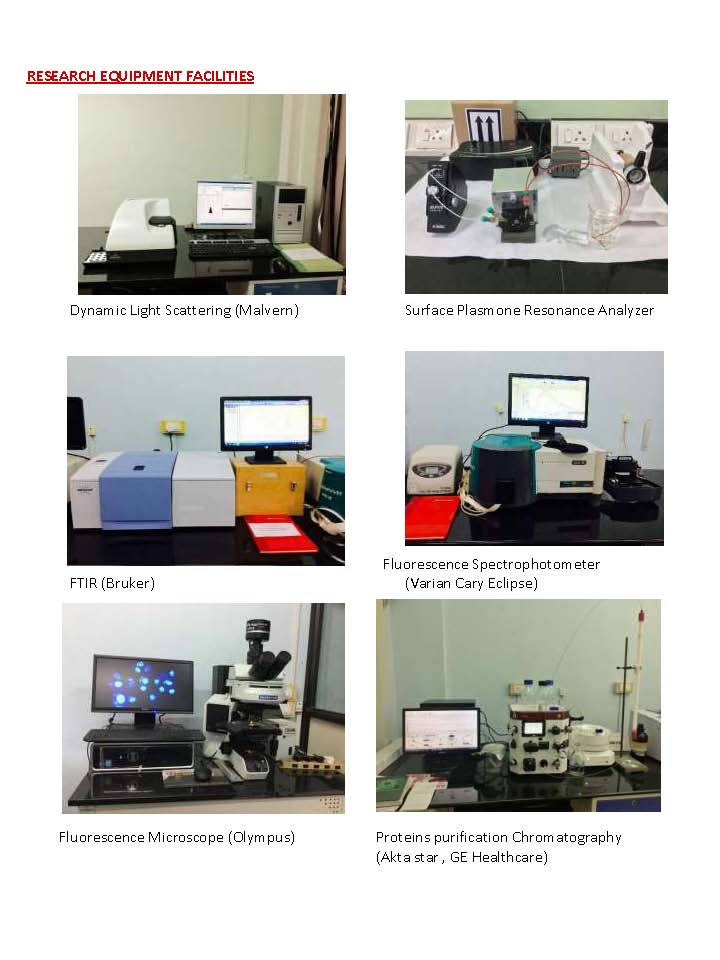 |
 |
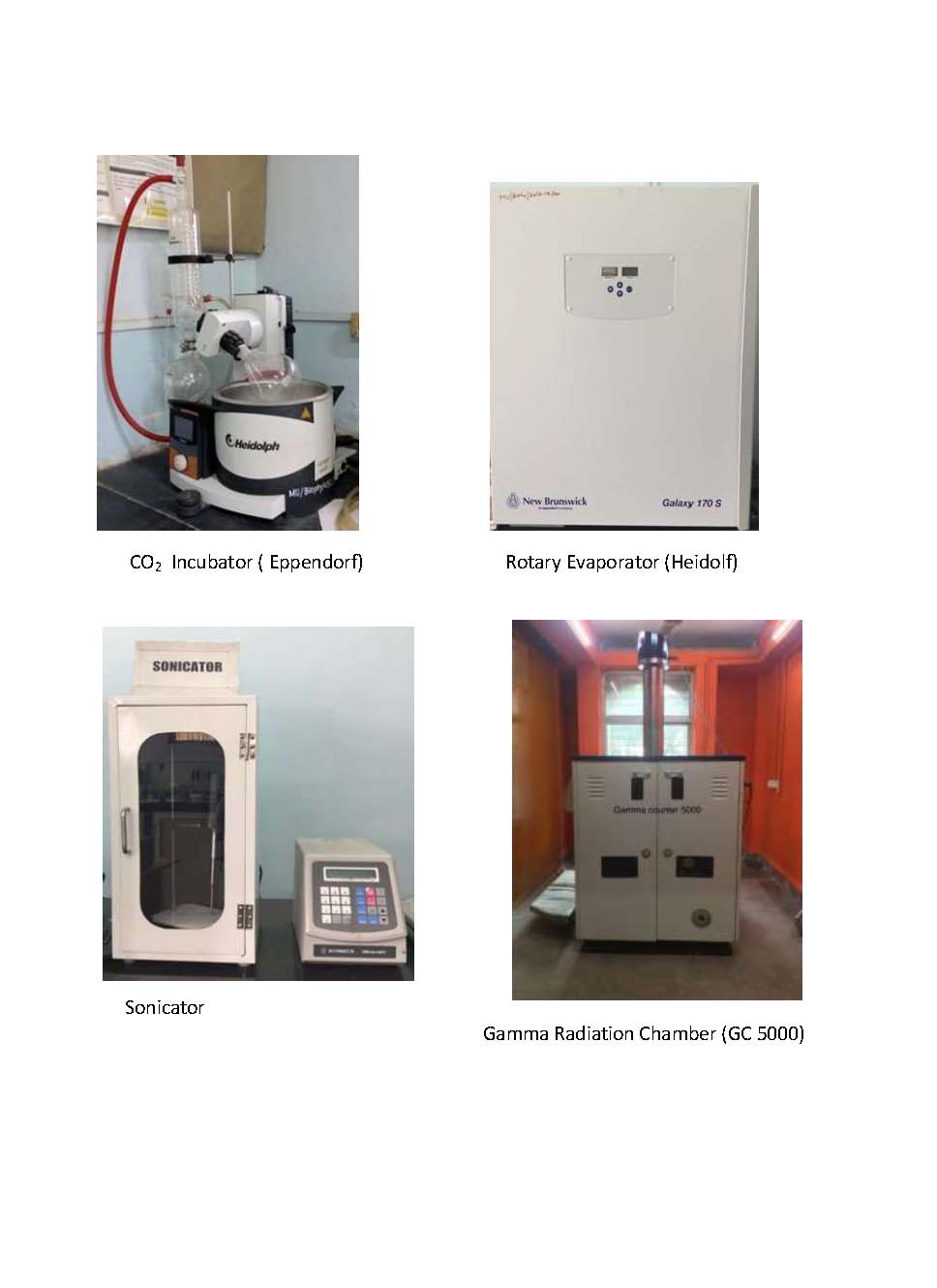 |
RESEARCH
THRUST RESEARCH AREAS
Protein biophysics, Fluorescence Biophysics, Nanobiophysics, Nanomedicine, Molecular Biophysics, Radiation Biophysics
RESEARCH INVESTIGATORS
- Mrs. Varsha Kelkar-Mane Prof &, I/c Head Department of Biophysics
- B. S. Rao, Adjunct Faculty, Department of Biophysics
- S. Sivakami, Adjunct Faculty, Department of Biophysics
- Dr Vinod Jaiswal, Assistant Professor , Department of Biophysics
- V. L. Mathe, SPPU, Pune
- Dr. Murli Chilkapati, ACTREC, Navi Mumbai
RESEARCH COLLABORATORS
❖ Advanced Cancer Training and Education Centre, Kharghar, Mumbai
❖ Haffkine Institute of Training and testing, Mumbai
❖ UM DAE Centre for Excellence in Basic Sciences
❖ Smt Savitribai Phule Pune University, Pune
Projects supported by University of Mumbai
- Interaction of nanoparticles with model biological system (Protein).
- Image guided intensity modulated radiotherapy: A comprehensive dosimetry and radiobiological study.
- Macromolecular crowding- a biophysical study of implication of volume exclusion effects on bimolecular complexes and them reconstitutes
- Study of diffusion and permeability of nanoparticles through model biological membranes.
- Structure-function properties of nanoparticles bound to biological active molecule in presence of UV radiation.
- In-silico Molecular Docking and Virtual Pharmacokinetic Screening study of Psoraledin and its Derivatives as Phosphatidylinositol3-kinase inhibitors
- Impact of microwave radiation induced heating on vitamins and proteins
- Screening of antithrombotic property of some herbal compounds
- Study of the electrical activity of human brain and heart of the subjects who practice meditation.
- In vitro structure-function based assays of snake venom in presence of nanoparticles
Projects sponsored by Govt of India
- Oxidative stress of cancer patients undergoing chemotherapy and radiotherapy treatment (BRNS, DAE, Government of India 2009).
- Development of Bioinformatics database for Radiomodifiers and make available through internet to user community (BRNS, DAE, Government of India)
- Design and Development of packaging for Dry Electrodes for Bio-potential measurement and their clinical testing (DRDO, Government of India)
PUBLICATIONS
Research paper publications
| Sr No | List of Publications |
| 1. | N Kumari, VL Mathe, CM Krishna, PM Dongre, (2022)
Journal of Biomolecular Structure and Dynamics, 1-17 |
| 2. | BS Khade, P Gawali, M Ali, MN Waghmare, PM Dongre, (2021)
Influence of Photon and Electrical Energy in the Nucleation of Silver Nanoparticles Synthesis Journal of Cluster Science, 1-9
|
| 3. | BS Khade, PG Gawali, MM Waghmare, PM Dongre, (2021)
Adsorption of α-amylase and Starch on Porous Zinc Oxide Nanosheet: Biophysical Study Food Biophysics 16 (2), 280-291 |
| 4. | NH Mudliar, PM Dongre, PK Singh, (2021) A Heparin based dual ratiometric sensor for Thrombin
International Journal of Biological Macromolecules 167, 1371-1378
|
| 5. | NH Mudliar, AM Pettiwala, PM Dongre, PK Singh, (2020) An anionic polyelectrolyte induced aggregate assembly of Thioflavin-T: A prospective platform for Protamine sensing
International Journal of Biological Macromolecules 164, 1174-1182
|
| 6. | J PENDHARKAR, M WAGHMARE, PG BHATIA, B KHADE, P DONGRE (2021)
Romanian Journal of Biophysics 31 (3)
|
| 7. | P PAL, G TALALE, P DONGRE, R SHAH, BIOPHYSICAL TECHNIQUES REVEALED INSIGHT OF POTENTIZED SOLVENT OF ETHANOL-WATER INTERFACE, (2021)
Romanian Journal of Biophysics 31 (3)
|
| 8. | MN Waghmare, TS Qureshi, CM Krishna, K Pansare, N Gadewal, A Hole, PM Dongre, (2022), β-Lactoglobulin-gold nanoparticles interface and its interaction with some anticancer drugs–an approach for targeted drug delivery |
| 9. | Niyati Mudliyar, Prabhat Singh and PM Dongre, A molecular Rotor Based Dual Ratiometric Sensor, Dyes and Pigments, 2020, Press (DYPI_2020_647) |
| 10. | Vinod J. P M Dongre, Biophysical interaction between silver nanoparticles-albumin interface and curcumin, Journal of Pharmaceutical Analysis, Press, 2020 |
| 11. | Manik N. Waghmare Tazeen S. Qureshi Afrin N. Shaikh Dr. Bipin S. Khade Dr. C. Murali Krishna Prof. Prabhakar M. Dongre, Functionalized Alpha‐lactalbumin Conjugated with Gold Nanoparticle for Targeted Drug Delivery, ChemistrySelect, 2020, 5:6, 2035-2049 |
| 12. | An efficient J-aggregate based fluorescence turn-on and ratiometric sensor for heparin NH Mudliar, PM Dongre, PK Singh, Sensors and Actuators B: Chemical 301, 127089 |
| 13. | Lahir, Y. (2019). Graphene and Graphene-Based Nanomaterials Are Suitable Vehicles for Drug Delivery. In Applications of Targeted Nano Drugs and Delivery Systems(pp. 157-189). Elsevier |
| 14. | Albumin nanoparticles conjugates binding with glycan-A strategic approach for targeted drug delivery, N Kumari, VL Mathe, PM Dongre, International journal of biological macromolecules
126, 74-90 |
| 15. | Dongre, P. M., & Joshi, A. (2018). A systematic organization of bioinformatics database of radiosensitizers and radioprotectors. Journal of Radiation and Cancer Research, 9(2), 102. |
| 16. | Waghmare, M., Khade, B., Chaudhari, P., & Dongre, P. (2018). Multiple layer formation of bovine serum albumin on silver nanoparticles revealed by dynamic light scattering and spectroscopic
techniques. Journal of Nanoparticle Research, 20(7), 185. |
| 17. | Sawant, S., Dongre, H., Ahire, C., Sharma, S., Jamghare, S., Kansara, Y., & Gupta, S. (2018). Alterations in desmosomal adhesion at protein and ultrastructure levels during the sequential progressive grades of human oral tumorigenesis. European journal of oral sciences, 126(4), 251-
262. |
| 18. | Hingane, V. C., Pangam, D., & Dongre, P. M. (2018). Inhibition of crude viper venom action by
silver nanoparticles: A biophysical and biochemical study. Biophysics and Physicobiology, 15, 204-213. |
| 19. | Pal, P. D., Dongre, P. M., & Chitre, A. V. (2018). Volume exclusion influences in spectral characteristics of DNA-amino acids complexes. Vibrational Spectroscopy, 99, 137-145. |
| 20. | Y K Lahir, 2018 Review: Influence of nanomaterials on cellular stress and cellular response |
| 21. | Lahir, Y. K. (2018). Impacts of metal and metal oxide nanoparticles on reproductive tissues and spermatogenesis in mammals. Journal of Experimental Zoology, India, 21(2), 593-608. |
| 22. | Khade, B. S., Mathe, V. L., & Dongre, P. M. (2017). α-amylase binding to thermal plasma synthesized zinc oxide nanosheets: A fluorescence study. Journal of Luminescence, 187, 449-456. |
| 23. | Cover image, Volume 23 , Number 8, November 2017, Leading in Oral, Maxillofacial, Head & Neck Medicine |
| 24. | Mariam, J., Sivakami, S., & Dongre, P. M. (2017). Elucidation of structural and functional properties of albumin bound to gold nanoparticles. Journal of Biomolecular Structure and Dynamics, 35(2), 368-379 |
| 25. | Sawant, S. S., Dongre, H., Ahire, C., Sharma, S., Kannan, S., Mahadik, S., & Vaidya, M. M. (2017). A nomogram for predicting the risk of neck node metastasis in pathologically node‐negative oral
cavity carcinoma. Oral diseases, 23(8), 1087-1098. |
| 26. | Jaiswal, V., Samant, M., Kadir, A., Chaturvedi, K., Nawale, A. B., Mathe, V. L., & Dongre, P. M.
(2017). UV Radiation Protection by Thermal Plasma Synthesized Zinc Oxide Nanosheets. Journal of Inorganic and Organometallic Polymers and Materials, 27(5), 1211-1219. |
| 27. | Influence of Meditation on Visual and Auditory Reaction Time in
Young Healthy Volunteers, Indian Journal of Physio Pharmacol, 2017; 61(2) : 100–106 |
| 28. | Yogesha, M., Rao, V. G., Martis, E. A., Coutinho, E. C., Gohlke, H., Chidangil, S., & D’Souza, J. S. (2017). Structural features of FAP174, a MYCBP-1 orthologue from Chlamydomonas reinhardtii,
revealed by computational and experimental analyses. RSC Advances, 7(81), 51391-51402. |
| 29. | Yogesha, M., Rao, V. G., Martis, E. A., Coutinho, E. C., Gohlke, H., Chidangil, S., & D’Souza, J. S. (2017). Structural features of FAP174, a MYCBP-1 orthologue from Chlamydomonas reinhardtii, revealed by computational and experimental analyses. RSC Advances, 7(81), 51391-51402. |
| 30. | Y K Lahir, 2017 Impacts of Fullerene on Biological Systems, November 2017 DOI: 10.2174/2212707004666171113151624 |
| 31. | Impacts of metal and metal oxide nanoparticles on embryos, Citation: Lahir YK. Impacts of Metal and Metal Oxide Nanoparticle on Embryos. Austin Endocrinol Diabetes Case Rep. 2017; 2(1): 1009.Austin Endocrinol Diabetes Case Rep – Volume 2 Issue 1 – 2017Submit your
Manuscript | www.austinpublishinggroup.com Lahir. © All rights are reservedAustin Endocrinology and Diabetes Case Reports |
| 32. | Impacts of metal and metal oxide nanoparticles on embryos.
Lahir YK. Impacts of Metal and Metal Oxide Nanoparticle on Embryos. Austin Endocrinol Diabetes, 2017; 2(1): 1009. |
| 33. | Guru, A. D., Lahir, Y. K., & Mohite, V. T. (2017). Study on some biochemical aspects of alimentary canal of millipedes Harpaphe haydeniana (Wood). Journal of Experimental Zoology, India, 20(2), 789-794. |
| 34. | Mariam, J., Sivakami, S., & Dongre, P. M. (2016). Albumin corona on nanoparticles–a strategic approach in drug delivery. Drug delivery, 23(8), 2668-2676. |
| 35. | Pal, P. D., Dongre, P. M., & Chitre, A. V. (2016). Implications of Volume Exclusion: A Look at
Thermodynamic Perspective of DNA-Hemoglobin Complexes and Their Reconstitutes Under Macromolecular Crowding. Journal of fluorescence, 26(1), 355-362. |
| 36. | Y K Lahir, ROLE OF NANOMATERIALS IN THE DEVELOPMENT OF BIOSENSORS, G.J.B.B., VOL.5(2)2016: 146-163 |
| 37. | Gurve, D., Muthurajan, H., Karnik, P., Deshpande, A., Srivastava, A. K., Mukhopadhyay, K., & Dongre, P. M. (2016, March). Novel algorithm for coherence level measurement using RR interval of ECG signal. In 2016 International Conference on Wireless Communications, Signal
Processing and Networking (WiSPNET) (pp. 2187-2191). IEEE. |
| 38. | Rao, V. G., Sarafdar, R. B., Chowdhury, T. S., Sivadas, P., Yang, P., Dongre, P. M., & D’Souza, J. S.
(2016). Myc-binding protein orthologue interacts with AKAP240 in the central pair apparatus of the Chlamydomonas flagella. BMC cell biology, 17(1), 24. |
| 39. | Tari, D., Haryan, S., Patankar, K., Jaiswal, V., Samant, M., Sivakami, S., & Dongre, P. M. (2016). A simple egg membrane model for understanding diffusion characteristics of nanoparticles and
amino acids. Available at SSRN 2783837 |
| 40. | Y K Lahir, Application of time and length scale concept in biological systems, Biochem. Cell. Arch.Vol. 16, No. 2, pp. 231-237, 2016 |
| 41. | Lahir, Y. H. (2016). Understanding the basic role of glycocalyx during cancer. Journal of Radiation and Cancer Research, 7(3), 79. |
| 42. | Lahir Y.K. Some Aspects of Interactions between Nanomaterials and the Cytoskeleton of Eukaryotic cells, January 2016, DOI: 10.23880/ACT-16000111 |
| 43. | Y K Some Biophysical And Biochemcial Interactions Of Nanomaterials On Protein Oxidation In Biological System Report and Opinion 2016;8(7) |
| 44. | Shirsekar, P. P., Kanhe, N., Mathe, V. L., Lahir, Y. K., & Dongre, P. M. (2015). Interaction of zinc oxide Nanoparticles with human red blood cells. Bionano frontier |
| 45. | Lahir, Y. K. (2015). Lipid oxidation in biological systems: Biochemical, Biological and Biophysical aspects. Global JB B, 4, 224-233. |
| 46. | Kumar, L. Y. (2015). Role and adverse effects of nanomaterials in food technology. Journal of toxicology and health, 2(1), 2. |
| 47. | Lahir, Y. K. (2015). A dynamic component of tissues-Extracellular matrix: Structural, functional and adaptive approach. Biochem Cell Arch, 15, 331-47. |
| 48. | Lahir, Y. K. (2015). Lipid oxidation in biological systems: Biochemical, Biological and Biophysical aspects. Global JB B, 4, 224-233. |
| 49. | Kumar, L. Y. (2015). Role and adverse effects of nanomaterials in food technology. Journal of toxicology and health, 2(1), 2. |
| 50. | Mariam, J., Sivakami, S., Kothari, D. C., & Dongre, P. M. (2014). Bioactivity of albumins bound to silver nanoparticles. The protein journal, 33(3), 258-266. |
| 51. | Pant, M. P., Mariam, J., Joshi, A., & Dongre, P. M. (2014). UV radiation sensitivity of bovine serum albumin bound to silver nanoparticles. Journal of Radiation Research and Applied Sciences, 7(4),
399-405. |
| 52. | Pardeshi, P., Nawale, A. B., Mathe, V. L., Lahir, Y. K., & Dongre, P. M. (2014). Effects of zinc oxide nanoparticles on the hepatic tissue of chicken embryo: a histopathological approach. Bio Nano Front, 2, 176-180. |
| 53. | Pal, P. D., Dongre, P. M., & Chitre, A. V. (2014). “Is Macromolecular Crowding Overlooked?”- Effects of Volume Exclusion on DNA-Amino Acids Complexes and Their Reconstitutes. Journal of
fluorescence, 24(4), 1275-1284. |
| 54. | Bhogale, A., Patel, N., Mariam, J., Dongre, P. M., Miotello, A., & Kothari, D. C. (2014).
Comprehensive studies on the interaction of copper nanoparticles with bovine serum albumin using various spectroscopies. Colloids and Surfaces B: Biointerfaces, 113, 276-284. |
| 55. | Lahir, Y. K. (2014). Morphological aspects of intercellular communication. Bionano Frontier, 7(1), 03-17. |
| 56. | Lahir Y K, Morphological aspects of inter cellular communication, Bionano Frontier, 2014, 7(1): 03-11 |
| 57. | Bhogale, A., Patel, N., Mariam, J., Dongre, P. M., Miotello, A., & Kothari, D. C. (2013, February).
Study of interaction of ZnO nanoparticles with human serum albumin using fluorescence spectroscopy. In AIP Conference Proceedings (Vol. 1512, No. 1, pp. 130-131). AIP. |
| 58. | Bhogale, A., Patel, N., Sarpotdar, P., Mariam, J., Dongre, P. M., Miotello, A., & Kothari, D. C. (2013). Systematic investigation on the interaction of bovine serum albumin with ZnO nanoparticles using fluorescence spectroscopy. Colloids and Surfaces B: Biointerfaces, 102, 257-264. |
| 59. | Dr P M Dongre, Effect on cognitive function from mobile phone use, Bionano frontier, Vol. 5. (1),2012 |
| 60. | Dr P M Dongre et al, Impact of microwave radiation heating on vitamins and proteins, Bionano Frontier, Vol. 5. (1),2012 |
| 61. | Sharma, S. D., Dongre, P., Mhatre, V., & Heigrujam, M. (2012). Evaluation of automated image
registration algorithm for image-guided radiotherapy (IGRT). Australasian physical & engineering sciences in medicine, 35(3), 311-319 |
| 62. | Shelke, J., Meshram, G., & Dongre, P. (2012). SYNTHESIS OF 2-OXOQUINOLINE-3-CARBOXAMIDE OF AMPICILLIN AND AMOXICILLIN AS INHIBITORS OF PENICILLIN BINDING PROTEIN 1A OF
PSEUDOMONAS AERUGINOSA. Acta poloniae pharmaceutica, 69(4), 623-628. |
| 63. | Mariam, J., Dongre, P. M., & Kothari, D. C. (2011). Study of interaction of silver nanoparticles with bovine serum albumin using fluorescence spectroscopy. Journal of fluorescence, 21(6), 2193. |
| 64. | Sharma, D. S., Dongre, P. M., Mhatre, V., & Heigrujam, M. (2011). Physical and dosimetric characteristic of high‐definition multileaf collimator (HDMLC) for SRS and IMRT. Journal of applied clinical medical physics, 12(3), 142-160. |
| 65. | Yadav, A. A., Barote, M. A., Dongre, P. M., & Masumdar, E. U. (2010). Studies on growth and
characterization of CdS1− xSex (0.0≤ x≤ 1.0) alloy thin films by spray pyrolysis. Journal of Alloys and Compounds, 493(1-2), 179-185. |
| 66. | Meshram, G., Shelke, J., & Dongre, P. (2010). Synthesis, antibacterial study and molecular
docking of some acrylic amide derivatives of ampicillin and amoxicillin. J Pharm Res, 3(10), 2371-2374. |
| 67. | Khurana, R. R., Patel, V. V., Dongre, P. M., & Nagare, B. J. (2009) In-silico Molecular Docking and Virtual Pharmacokinetic Screening study of Psoralidin and its Derivatives as Phosphatidylinositol 3-Kinase Inhibitors. Trends in Bioinformatics 5(1 &2):163-178 |
| 68. | Bansode, T. N., Dongre, P. M., & Dongre, V. G. (2009). Synthesis, antibacterial and antifungal
activity of 1, 3-di (2-substituted 10H-phenothiazin-10-yl) propan-1-one. Pharmaceutical chemistry journal, 43(6), 311. |
| 69. | Simple, Efficient Synthesis, Antibacterial activity and Molecular Docking Study of 3- (1Hbenzimidazol- 2-yl)-2-chloroquinolines Compounds |
| 70. | Shilpa Patil, P M Dongre , Silver Nano Particles Modified Chitosan Beads: An Improved Stability of Cellulase by Immobilization |
| 71. | Y K Lahir, Advances in Clinical Toxicology Some Aspects of Interactions between Nanomaterials and the Cytoskeleton of Eukaryotic cells Some Aspects ofInteractions between Nanomaterials
and the Cytoskeleton of Eukaryotic cells Advances in Clinical Toxicology, Advances in Clinical Toxicology, volume 1 issue 2 |
Book Chapters
| Sr No Book Chapters |
| Dr Y K Lahir, Graphene
1 APPLICATIONS OF TARGETED NANODRUGS AND DELIVERY SYSTEMS Publisher: Elsevier Inc, October 2018 |
| Dr P M Dongre, Title of Chapter: Gold Nanoparticle–Assisted Radiation Therapy
2 Title of Book: Radiation in Medicine and Biology, Edited by Pandit B. Vidyasagar, Sagar S.Jagtap, and Omprakash Yemul, Copyright © 2016 Pan Stanford Publishing Pte. Ltd.ISBN 978-981-4745-92-5(Hardcover), 978-981-4745-93-2 (eBook) www.panstanford.com |
INNOVATION & AWARDS
Research, Innovation and Extension
Digitization of bioinformatics database of radiosensitizers and radioprotectors
Radiotherapy is regarded as one of the most important therapeutic modalities for the treatment of malignant lesions. This field is undergoing rapid advancements in the recent times. With the use of radio-sensitizing and radioprotective agents, the course of radiotherapy has improved the sensitization of tumour cells and protection of normal cells, respectively
Radiosensitizers makes tumour cell more sensitive to radiation therapy which increase the effectiveness of cancer treatment where radioprotectors are the compounds that reduce the damage/ spare normal tissue. Several of these compounds have been studied using appropriate biological model system and their efficacy is reported in literature. The literature of these compounds is highly scattered and it is essential to have all this information on a single platform which will further help in the improvement in radiotherapy treatment.
Hence, department has developed bioinformatics database of radiosensitizers and radioprotectors using information available in PubMed, scientific journals and other scientific sources. The collected information of these compounds is systematically organized on a single platform where user can browse typical information of the compound pertaining to mainly structural features, radiobiological aspects, biological targets, clinical trials, pharmacological aspects, toxicity etc. The direct link of these compounds is available on University of Mumbai web portal (www.mu.ac.in) / http://bioph.mu.ac.in/Welcome/ as well as Department of Biophysics web portal. This comprehensive database will be useful for clinicians, researchers and radiation workers etc. Along with this exhaustive exercise, we have invited feedback from users for further improvement or revision of this bioinformatics database. Similarly interested researcher, clinician can be uploaded his/her experimental data (peer reviewed).
Finance Support: Board of Research in Nuclear Sciences, Department of Atomic Energy, Govt of India
Nanostructure-based snake venom inhibitor
Snake bite is one of the most important public health problems worldwide, specifically in tropical countries. It is a common occupational hazard mainly in rural areas. There is significant morbidity and mortality reported worldwide. In India near about 52 thousand morbidity reported per year. At present there is no reliable treatment established due various physiological/ biochemical problems.
Snake venom is a complex mixture of various biologically, and pharmacologically active proteins and polypeptides. The current treatment available for snake bite is intravenous administration of anti-snake venom (ASV) which neutralizes snake venom. ASV is the polyvalent antibodies manufactured by using surrogate animals (e.g. Horse). These animals are immunized with the snake venom and then antibodies are collected from blood and purified. Treatment with Anti snake venom (ASV) is lifesaving but very risky and may not be safe sometimes, and may cause sensitivity reactions in patients (chills, nausea and fever, hypersensitivity or anaphylactic shock). Hence there is a need to focus on alternative treatment considering the limitation of available treatment. In this research work, Silver/ gold nanostructures were used as potential inhibitors against snake venom. We have shown that the action of venom is reduced up to 95% using these nanostructures.
Teaching, Training kit for nanostructure preparation
To train the students (high school, graduate, post graduate, research scholar etc) in the field of nanoscience and nanotechnology, we have developed teaching, training kit for synthesis of nanostructures (gold and silver). The kit provides desired chemicals/ constitutes, from which the students can easily prepare these nanostructures by following the given simple protocol. A major advantage of this kit eliminates sophisticated equipment’s and other expenditures.
Key features:
- First time will be introduced in the educational system
- Simple, effective & economical kit for training for the understanding synthesis of nanostructures
- Minimum requirement, eco-friendly, customized, and time-saving
- Useful to high school, Jr & Sr College students
Crystal for cell / biomolecules storage
Storage/preservation of cells is extremely important to ensure that quality is maintained before usage of cells. Several industries such as the food, pharmaceutical, and horticultural industries require extensive use of various types of cells. Hence there is a requirement to preserve cells so that they can be used either directly or for further research at the appropriate time. In order to preserve these cells, expertise from a variety of disciplines including but not limited to engineering, biology, biotechnology, cryobiology etc is required to design protocols that enable the development of precise and reliable preservation methods. There are many methods that are used today to preserve cells, such as cryopreservation, hypothermic preservation, vitrification, freeze drying etc. All these methods have advantages, disadvantages, and several limitations.
Our research team has developed a simple and innovative technique where cell / biological materials (DNA) can be preserved for a longer time. Its unique crystal can preserve cells longer time without providing nutrients, it’s cost-effective, novel, and simple. Not much expertise is required. Testing of this technique, experimentation, and data collection/validation is in progress.
Teaching training membrane model for understanding diffusion characteristics in biology
Diffusion is an important phenomenon that occurs in a living system for carrying out various biological activities. This has been quantitatively described using mathematical models and proved experimentally. The outcome of these studies has been used for designing the experiments in vivo and vitro .The simplest mechanism by which molecules can across the membrane is passive diffusion. During passive diffusion, a molecule simply crosses the membrane and enters the aqueous solution at the other side of the membrane.
We have developed a simple biological membrane model for understanding diffusion characteristics in biology. The chicken eggshell has been used and prepared as a membrane model to perform passive diffusion. It diffusion has been performed for Silver Nanoparticles and amino acids against gravity, towards gravity, and lateral state. This membrane has been systematically characterized with the help of X-ray Scattering and Scanning Electron Microscopy. This model is being established at a large-scale level.
Teaching, Training kit for nanostructure preparation
To train the students (high school, graduate, postgraduate, research scholar etc) in the field of nanoscience and nanotechnology, we have developed a teaching and training kit for the synthesis of nanostructures (gold and silver). The kit provides desired chemicals/ constitutes, from which the students can easily prepare these nanostructures by following the given simple protocol. A major advantage of this kit is that it eliminates sophisticated equipment and other expenditures.
Key features:
- First time will be introduced in the educational system
- Simple, effective & economical kit for training for the understanding synthesis of nanostructures
- Minimum requirement, eco-friendly, customized, and time-saving
Useful to high school, Jr & Sr College students
ACHIEVEMENTS/AWARDS
M.Sc. and Ph.D. Students
Ph.D. Awarded
| Sr No | Student Name | Topic Name | Fellowship awarded | Degree awarded Year | Degree awarded in |
| 1 | Ms. Jessy John | A study of interaction of Nanoparticles with model Biological Systems using Biophysical Approaches. | DST-INSPIRE | 2014 | Biophysics |
| 2 | Mr. Dayanand Sharma | Image guided intensity modulated radiotherapy: A comprehensive dosimetry and radiobiological study. | 2014 | Biophysics | |
| 3 | Priyanka Pal | Macromolecular crowding- a biophysical study of implication of volume exclusion effects on bimolecular complexes and their reconstitutes | DST-INSPIRE | 2016
|
Biophysics |
| 4 | M.Venkatramanan | Characterization of Flagellar associated protein 174 (FAP174) from the green chlorophyte Chlamydomonas reinhardtii | DBT-SRF | 2016 | Biophysics |
| 5 | Mr. Bipin S Khade | Investigation of structure function relationship of model protein in presence of metallic nanoparticle | UGC-RGNF | Feb-2018 | Biophysics |
| 6. | Mrs. Aditi Lohot | A systematic study of the electrical activity of human brain and heart of the subjects who practice meditation. | Non-Net | May 2018 | Biophysics |
| 7. | Mrs. Vrushali Hingane | In vitro structure-function based assays of snake venom in presence of nanoparticles | Non-Net | May 2018 | Biophysics |
| 8. | Mrs. Sharda Sawant
|
A study of desmosomal and hemi-desmosomal adhesion junctions in neoplastic progression of human oral cancer using transmission electron microscopy. | ———— | 2019 | Biophysics |
Achievements
- Venkatramanan G. Rao (PhD Scholar), DBT- Senior Research Fellow
- Jessy Mariam, ( PhD scholar, 2008-14), DST INSPIRE fellowship, New Delhi
- Bipin S Khade (PhD student), RGNF. UGC XII plan
- Priyanka Pal, (PhD student) DST INSPIRE fellowship. New Delhi
- Mugdha Dhurandhar (MSc Student 2015-17), DST-INSPIRE, New Delhi, India
- Vrushali Khedekar ( MSc Student 2015-17), DST-INSPIRE, New Delhi, India
- Zehra Haider (MSc Student, 15-17), Scholarship through NGO
- Jessy Mariam a Ph. D scholar, Second prize for best research paper presentation in International Conference on Nanobiotechnology: An Interface between Physics and Biology, Jamia Millia Central University, New Delhi, on Dec 2-4, 2010.
- Bipin Khade, MH-SET (2015), CSIR-NET (Dec 2015 (AIR 66), June 2016 (AIR 141)
- Bipin Khade, D scholar, Best research paper presentation award, IISER Mohali, March 2017
- Best paper presentation award Metalions, NEERI.
- Suraj Singh, Silver medal Avishkar 2017
- Manik Waghmare, Silver medal at Avishkar 2017-18 final University Round
- Vinod Jaiswal, Best research paper award- “International Conference on Nanotechnology for Human Welfare”.
- Vinod Jaiswal- NET (CSIR-UGC 2018) Qualified
- Prasad Kapkar-NET (CSIR-UGC 2018) qualified
- Prasad Kapkar MH-SET (2018) qualified
- Dhanashri Pangam, Silver medal at Avishkar 2018-19 final University Round
- Dhanashri Pangam, PhD scholar, SARTHI fellow, 2019
- Vinod Jaiswal, University Gold medal-Avishkar 2019-2020
- Vinod Jaiswal, Innovation award by Nehru Science Centre, 2019-2020
- Vinod Jaiswal, Inter-University Gold medal-Avishkar 2019-2020
- Tazeen Qureshi Sc Student DST-INSPIRE award 2020
- Puja Shah, M.Sc Student DST-INSPIRE award 2021
ORGANIZED CONFERENCES/SYMPOSIA.
| Sr. No |
Year |
Title of organized conference/symposia |
| 1. |
2022 |
Outreach program for high school students, March, 2022 |
| 2. |
2021 |
Outreach program for high school students, 18,19 Feb |
| 3. |
2021 |
Three Days Mini Symposium – Workshop on Biophysics |
| 4. |
2020 |
Carrier Guidance-Biophysics-September 2020 |
| 5. |
2019 |
Workshop On Exploring Biophysical
Techniques For Protein Purification And Characterization, Nov, 2019 |
| 6. |
2019 |
Two Days Mini Symposium – Workshop on Biophysics, August 2019 |
| 7. |
2018 |
Two Days Mini Symposium – Workshop on Biophysics, august 2018 |
| 8. |
2016 |
International Conference on Metal Ions in Biology, November 28-30 |
| 9. |
2016 |
National Seminar on “Impact of Climate change on Human health with respect to
vector borne and water borne diseases” in association with CSIR NEERI, Mumbai, June 2016 |
| 10. |
2016 |
Biophysics Week – “Workshop and Seminar on
advanced Biophysical techniques”, March, 2016 |
| 11. |
2015 |
National Seminar-Emerging Opportunities and Rewarding Carrier of Radiation and
Cancer Research (CAREER-RCR), July, 2015 |
| 12. |
2014 |
Workshop on Biopotential and Signal Processing, September, 2014 |
| 13. |
2014 |
Workshop on Advances in Bioimaging, Feb, 2014 |
| 14. |
2013 |
National Symposium (IBS) on frontiers of Biophysics, Biotechnology,
Bioinformatics, Jan, 2013 |
| 15. |
2012 |
National Seminar on “Structural biology and bioinformatics”, Feb, 2012 |
| 16. |
2011 |
National Seminar on-Advanced techniques in Radiation Biophysics, Feb, 2011 |
STUDENT SUPPORT & PROGRESSION
Financial Assistance
- Scholarships:
- National Merit Scholarship
- GOI merit scholarship
- Merit scholarship is also available of the University of Mumbai.
- Earn and learned scheme
- Study Tour: The Department organizes study tour for the students to visit National Research laboratories and R & D Industries laboratories in India.
- Participation in conferences & Avishkar: Sc & PhD students are highly encouraged to attend national and international conferences and present their research work. It provides them a platform to interact with eminent scientists from India as well as abroad. Every year students from the department participate in the annual conference organized by Indian Biophysical Society (IBS). Students also participate actively in the inter-university competition like Avishkar. The department has bagged Avishkar awards continuously in the last four years.
- Project work: Department also helps Post graduate students in designing hypothesis, research problem through regular brainstorming session and executing their research work in the department. Apart from this they are guided in publishing their research work in reputed peer reviewed journals.
ALUMNI STATUS
PLACEMENT FOR HIGHER STUDIES
|
Sr No. Name of student |
NAME OF INSTITUTE |
Academic Year |
| 1. Shruti Nimkar | PhD, New Zealand | 2004-05 |
| 2. Ameya Sathe | Post Doctorate – IISER Pune | 2005-06 |
| 3. Richa Singhal | PhD, Kentucky University, US | 2006-07 |
| 4. Aditya Rao | PhD, US | 2006-07 |
| 5. Shailu Laxman | PhD, US | 2006-07 |
| 6. Sweta Parab | PhD, NIRRH, Mumbai | 2006-07 |
| 7. Reshma Pandit | PhD, KEM, Mumbai | 2006-07 |
| 8. Dipesh Jadhav | NCL, Pune | 2008-09 |
| 9. Kartik Bane | PhD EMBL UK | 2008-09 |
| 10. Rahul Jawale | PhD Dept. of Biophysics, University of Mumbai | 2008-09 |
| 11. Anwesha Laha | PhD, University of Lousville, USA | 2009-10 |
| 12. Amruta Joshi | PhD, Dept. of Biophysics, University of Mumbai | 2009-10 |
| 13. Aditi Lohot | PhD, Dept. of Biophysics, University of Mumbai | 2009-10 |
| 14. Pialy Chatrjee | PhD, Haffkines Institue | 2009-10 |
| 15. Chaitanya Giri | PhD, Max Plank Institute, Germany | 2010-11 |
| 16. Priyanka Pal | PhD, Dept. of Biophysics, University of Mumbai | 2011-12 |
| 17. Pravin Bhise | PhD, University of Mumbai | 2011-12 |
| 18. Ankita Balsaraf | PhD, US | 2011-12 |
| 19. Vaibhav Patil | PhD, Ireland | 2012-13 |
| 20. Nitish Kunte | Research Fellow, ACTREC, Mumbai | 2012-13 |
| 21. Tushar Rashkar | PhD , IIT-Mumbai | 2012-13 |
| 22. Sachin Ghag | NIRRH, Mumbai | 2013-14 |
| 23. Shalaka Kadam | NIRRH, Mumbai | 2013-14 |
| 24. Kaustubh Patankar | PhD, ICT, Mumbai | 2013-14 |
| 25. Mahesh Samant | PhD, Dept. of Biophysics, University of Mumbai | 2013-14 |
| 26. Sagar Khawenekar | PhD, Switzerland | 2013-14 |
| 27. Monika Henry | Research Fellow, IISC, Bangalore | 2014-15 |
| 28. Samuel Mangham | Research Fellow, CCMB, Hyderabad | 2014-15 |
| 29. Surbhi Abhyankar | RA, KEM, Mumbai | 2014-15 |
| 30. Manish Narkar | Research Fellow, Haffkines Institute, Mumbai | 2014-15 |
| 31. Aditya Narvekar | Research Fellow, IISER, Bhopal | 2015-16 |
| 32. Yojit Sharma | Research Fellow, IISER, Kolkata | 2015-16 |
| 33. Nitin Kunthe | IRELAND | 2015 |
| 34. Viabhav Kale | IRELAND | 2015 |
| 35. Monica Henry | IISc, BANGLORE | 2016 |
| 36. Kaustubh Patankar | ICT, MUMBAI | 2016 |
| 37. Mahesh Samant | BIOPHYSICS, MU | 2016 |
| 38. Sagar Khavnekar | MAX Plank Germany | 2017 |
| 39. Tushar Rashkar | University of Hamburg | 2016 |
| 40. Samual Mangam | CCMB-HYDERABAD | 2016 |
| 41. Manik Waghmare | BIOPHYSICS, MU | 2017 |
| 42. Yojet Sharma | TIFR, Mumbai | 2017 |
| 43. Vinod Jaiswal | BIOPHYSICS, MU | 2017 |
| 44. Manik Waghmare | BIOPHYSICS, MU | 2017 |
| 45. Aditya Narvekar | ICT, MUMBAI | 2017 |
| 46. Mugdha Dhurandhar | NCBS, BANGALORE | 2018 |
| 47. Vrushali Khedekar | NCBS, BANGALORE | 2018 |
| 48. Zehra Haider | NIMHANS, BANGALORE | 2018 |
Destiny landed me into the field of Biophysics by chance way back in 1986 when it used to be conducted at Cancer Research Institute, Parel. I completed my M.Sc. in Biophysics in 1988 and was offered a scholarship to go to Germany on a 1 year Project in NMR imaging, however I could not avail of it due to personal reasons. Biophysics showed me the beauty of seeing things through the interdisciplinary lens which benefited me and my students, when I became a Science teacher. I emphasized my students to analyse the interdisciplinary nature of all 3 sciences and Maths and I could see the excitement when they had their own Eureka moments while discovering unique patterns and relationships in nature. I have taught for many years, written many books on Science and now train Teachers to teach Science and I credit my foundation in Biophysics for honing my creativity and innovative domains and my success as a Teacher. Biophysics helps you analyse every aspect in depth and think out-of- the-box. I wish all Science teachers should at least have a background of one of the interdisciplinary subjects like Biophysics.
 Dr. Richa Singhal, M.S., Ph.D.
Dr. Richa Singhal, M.S., Ph.D.
I am Postdoctoral Associate, Department of Medicine, University of Louisville. I started my scientific pursuit with a Bachelor in Biotechnology. The natural evolution was to pursue my Masters in a field, which embodies both the biological structure of the cells and the physical laws governing them- BIOPHYSICS. The remarkable aspect that drew me towards this subject is its extension of molecular biology to the areas of computational and instrumentation techniques, and modern physics. The primary focus of the course was on the revelations of molecular structures which provided me with fresh insight into the way molecules work, particular in the development of biological systems and initiation of disease and disorder in the system. What stayed with me was the role played by the bio-molecular structure in information processing and signal transduction pathways within the cell. Biophysics course strengthened my interest in research, and I graduated with a Ph.D. in Biology with research in the field of plant biotechnology, biochemistry, molecular genetics, and bioinformatics. I am presently working as a postdoctoral associate at the Department of Medicine at the University of Louisville and involved in various projects broadly encompassing epigenetic modifications, proteomics, metabolomics, alcoholic liver disease, HIV and human microbiome research. To date, I use both fundamentals and recent developments in BIOPHYSICS in my medical research.
The vastness of biology has always intrigued me. My quest in true sense started while pursuing my Bachelor’s degree in Microbiology, learning the living of microscopic organisms. Enrolling for Master’s program in Biophysics was an opportunity of gaining a new perspective in the field of biology. The coursework helped me understand the true essence of Biophysics. It helped me nurture my inquisitive mind and my interest in research. I have completed my Ph.D. in Biochemistry studying the role of reversible acetylation of alpha-tubulin in sperm motility at National Institute for Research in Reproductive Health (ICMR), Mumbai. At present I am a post- doctoral fellow at Department of Cardiovascular and Metabolic Sciences, Lerner Research Institute-Cleveland Clinic, Cleveland, USA.
 Mr. Prathamesh Pandurang Shirsekar
Mr. Prathamesh Pandurang Shirsekar
I, Prathamesh Pandurang Shirsekar, MSc Pass out batch 2014, working in the area of Biomedical Instrumentation (4 Years) as an application specialist with Bioscreen Instruments. Biophysics is branch of pure science where an individual can learn and make their basics strong on molecular mechanism of an organism, it’s relation with the thermodynamic properties and basic principles of molecular detection system through instrumentation. In short it allows understanding and detecting the biological activities on the basis of Law of Physics. Biophysics also deals with Nanotechnology and its application in drug delivery which plays major role in safe and accurate drug delivery to its target site. Biophysics allows an individual to explore themselves across multiple dimensions in the field of Pharma, research and physiology. Hence, it allows to mould yourself as per the requirement of any Biological and Biomedical instrumentation field and gives better chance to sustain in it. Biophysicist can work in Pharmaceuticals and biomedical instrumentation companies, hospitals, universities and research centres which give a wide area for job opportunities. Hence, Biophysics could be a best opportunity to define your future path.
Biology has astonishing beauty embedded within it. It has been a reason of enthusiasm to mimic it in more and more sophistic manner. To mimic any kind of system one should have a thorough and deep knowledge about it. It is not possible to engrave or recast biological mimicry without knowledge of molecular machines driving it. In order to make this giant task one should be familiar with molecular symmetry; deep knowledge of high-resolution spectroscopic tools, high throughput imaging system, algorithms, computational modelling and list is endless. This seems to be a nail-biting task but aura of biophysics encloses of all these techniques. Biophysics is an interdisciplinary subject in which its nodes to all of the super speciality techniques those are evolved due to revolutionary characterization techniques and instrumentation. Biophysics explore wide range of area such as enzyme biophysics ,molecular motors, electrochemistry, photochemistry, redox chemistry, supra- molecular chemistry, nanotechnology, etc. Biophysics has endless opportunity. Biophysicist has to mark his focus with use of advanced instrumentation and characterization techniques to prove certain biochemical or biophysical phenomenon. I thank Prof. P. M. Dongre and his multi-speciality team for giving opportunity to me to take fist booster dose of biophysical horizon.
I am a Graduate Research Assistant, Department of Physiology, Southern Illinois University Carbondale, Illinois, USA. I feel proud to have post graduated from Department of Biophysics, University of Mumbai. I joined this department because of two reasons. First, Department has excellent research lab facility. Second, the syllabus of course is designed according to current research, textbooks and literature. Teaching faculty is competent professionally. During the 2 years stint of master degree, I have greatly enjoyed the process of building depth of my knowledge. I have earned adequate professional skills to work independently. Young researchers in the department were influential in ascertaining my confidence in pursuing research. International conferences and guest lectures organized by the department gave me a great opportunity to interact with scientists and students in the same field. A recommendation letter from Head of the department Dr. Prabhakar Dongre helped me secure a full-time job as research fellow at National Institute for Research in Reproductive Health. He also encouraged and guided me to pursue higher education in USA’s universities. I am overall happy and I would love to work for this department if given a chance.
It has always been my passion to explore the Creator’s beautiful creations. The pursuit of such a desire led me to complete my BSc in Physics. I, then, joined theDepartment of Biophysics to pursue MSc in Biophysics. The best part of it was the interdisciplinary nature of the course, and learning from experts of different fields. This widened the horizon of Science to me. Learning Biophysics here has fostered the right environment to pursue my research ahead. I am currently doing my PhD in Neuroscience in Molecular Biophysics Unit, IISc, Bangalore.
I am a Graduate student of Indiana University, Indiana, USA. Department of Biophysics is committed to high standard of education. Being master student, I hardly knew what to expect from teachers and the course work. But eventually I came to know, Biophysics is an amalgamation of Biology and Physics. Being a Microbiologist, I was very enthusiastic to learn new things, techniques and transform my mindset into research-oriented learning. The department of Biophysics encouraged me to explore other research areas and I got an opportunity to work in National Institute for Research in Reproductive Health and King Edward Memorial Hospital, Mumbai. The knowledge which I gathered in Department of Biophysics, further encouraged me to pursue higher education. Guidance and support from Dr. Dongre, Professor and Head of the department, transformed my efforts into securing admit from USA’s universities.
I am Aditya Narvekar, currently pursuing Ph.D. at ICT, Mumbai, alumnus of the batch 2014-16 of the Department of Biophysics, University of Mumbai. An interdisciplinary subject for my masters and biophysics was the most appropriate choice. It is a highly vibrant field where researchers from fields such as physics, chemistry, biology, engineering, material sciences etc. use their knowledge and skills to understand and develop new tools in order to understand how life works. It forms a bridging science where complex systems such as molecules, cells, organisms and ecosystems are understood better through physical and chemical principles. Thus, life processes such as nervous communication, photosynthesis, metabolism, energetics, tumorigenesis are understood from quantitative perspectives of physics and chemistry. The subject thus, gives a detailed view of any life process under consideration. The department is well equipped with state-of-the-art facilities which allow research in various areas of biophysics. Instrument accessibility, in-depth discussion, coursework flexibility with project work, job opportunity and alumni suggestions are the keep parameters that should be explored by the department for additional efficiency.
Living systems are highly complex systems where all the fundamental forces and interactions take place in a wonderfully coordinated manner. Hence, biology in itself is not a separate science, but a system driven by fundamental forces of physics and chemical interactions between the atoms which can be derived by mathematical equations. Therefore, it is impossible to study it completely with any single branch of science. Biophysics provides with the opportunity to decipher the complete picture by taking in to account all the branches of science that come into play. Biophysics being an interdisciplinary science provides opportunities for students from all the backgrounds. This subject has given me a broader perspective and multiple points of view to study the living systems in more efficient ways. But most of the labs in India usually limit it to techniques rather than employing it to understand the fundamental concepts. In my opinion, there should be more focus on understanding the basic behaviour of living molecules and systems from the point of view of all the branches of science.
CONFERENCES /SYMPOSIA/WORKSHOPS/ INVITED TALKS ORGANISED
ORGANIZED CONFERENCES/SYMPOSIA
| Date | Title of organized conference/symposia | |
|
1. |
Dec 2010 |
Fluorescence steady state and lifetime analysis |
|
2. |
Feb 2011 |
Advanced techniques in Radiation Biophysics |
|
3. |
Feb 2012 |
National Seminar on “Structural biology and bioinformatics” |
|
4. |
Jan 2013 |
National Symposium (IBS) on frontiers of Biophysics, Biotechnology, Bioinformatics |
|
5. |
Feb 2014 |
Advances in Bioimaging |
|
6. |
Sep 2014 |
Biopotential and Signal Processing |
|
7. |
July 2015 |
Emerging Opportunities and Rewarding Carrier of Radiation and Cancer Research (CAREER-RCR) |
|
8. |
Mar 2016 |
Biophysics Week – “Workshop and Seminar on advanced Biophysical techniques” |
|
9. |
Jun 2016 |
National Seminar on “Impact of Climate change on Human health with respect to vector borne and water borne diseases” in association with CSIR NEERI, Mumbai |
|
10. |
Aug 2018 |
Two Days Mini Symposium – Workshop on Biophysics |
|
10. |
Aug 2019 |
Two Days Mini Symposium – Workshop on Biophysics |
|
11. |
Nov 2019 |
Workshop On Exploring Biophysical Techniques For Protein Purification And Characterization |
INVITED TALKS
| Sr.
No. |
Date | Topic | Speaker |
| 1. | 05th Sept 2007 | “Trends in protein NMR” | Prof. K.V.R. Chary, Dept. of Chemical Sciences, TIFR, Mumbai |
| 2. | 21st Jan 2008 | “Overview of simulation software for nanotechnology and biotechnology” | Dr. Sivram Venkatraman and Dr. Chaudhary, Senior Staff Scientists, Accelerys, Bangalore |
| 3. | 29th Jan 2008 | “An introduction to nanobiology” | Dr. Nagraj Huilgol, Chief Radiation
Oncologist, Dr. Balabhai Nanvati Hospital & MRC, Mumbai |
| 4. | 20th Feb 2008 | “Mechanism of genome repair process” | Dr. B. Jagadeshwar Rao, Prof. and Chair, Dept. of Biological Sciences, TIFR, Mumbai |
| 5. | 15th Jan 2009 | “Development of prophylactic vaccine using high-quality
recombinant subunit protein” |
Dr. Suresh Patil Member of Indian American Council(IAC) |
| 6. | 26th Aug 2009 | “Confocal laser scanning microscopy technique” | Mr. Anil Kundaliya, Lab India Ltd. |
| 7. | 07th Jan 2010 | “A newer approach for treatment of wound infections and role of immunity in health
and disease” |
Prof. B.S. Nagoba, Asst. Dean, MIMSR Medical College. |
| 8. | 22nd Oct 2010 | “Aptamer Technology” | Wei Duan , School of Medicine, Deakin University, Australia |
| 9. | 19th Nov 2010 | “Oxidatively generated DNA damage in cells: formation and measurement” | Prof. Jean Cadet, Scientific Advisor, French Atomic Energy Commission, Adjunct Professor, University of
Sherbrook, Canada. |
| 11. | 3rd June 2011 | “Exploring the human body by magnetic resonance imaging and MR Spectroscopy | Dr. N.R. Jagannathan, Prof. and Head, Department of NMR & MRI facility, All India Institute of Medical
Science, New Delhi |
| 12. | 28th Sep 2011 | “World leading Biotechnology at the University of Queensland – Technological response to global change” | Prof. Ross Barnard, Biotechnology Program Director, School of Chemistry and Molecular Biosciences, Faculty of Science,
University of Queensland |
| 13. | 20th Dec 2011 | “Surviving Starvation-Lessons from a Processive Exopolyphosphatase” | David A. Sanders, Markey Center for Structural Biology, Department of Biological Sciences, Purdue
University, US |
| 14. | 27th Aug 2012 | “Information, knowledge and Life in the 21st century” | Dr. B Vijnana, IIT Kharagpur |
| 15. | 21st Jan 2013 | Oxidative stress induced DNA damage | Dr. Jean Cadet, Scientific Advisor |
| 16. | 29th Aug 2013 | Cancer cell signalling process | Dr. B N Pandey, Department of radiobiology & Health Sciences, BARC, Mumbai |
| 17. | 10th Sept 2013 | “Radiation Dosimetry” | Dr. S D Sharma, Head, Medical physics, section RP & AD, BARC |
| 18. | 08th Oct 2013 | Introduction of application of
Multiphoton and confocal microscopy |
Dr. Rishi kant (Carl Zeiss India) |
| 19. | 28th Nov 2014 | “Membrane Channel and Neurotoxins” | Prof. Peter N Strong, Sheffield Hallam University |
| 20. | 21st Aug 2014 | “NMR in Biology and Medicine” | Prof. Girjesh Govil, Emeritus Scientist, TIFR, Mumbai |
| 21. | 26th Aug 2014 | Radiation In Cancer Therapy | Prof. G D Maru, ACTREC, Navi Mumbai |
| 22. | 18th Mar 2015 | An overview of education, Training and clinical role in
Healthcare |
Dr. Indra J Das, Prof. & Director of Medical Physics, Indiana University. |
| 23. | March 2015 | “Opportunities in Biophysics” | Prof. T P Singh, Department of Biophysics, AIIMS, New Delhi |
| 25. | Aug 2016 | Opportunities to Biophysicist in India and Abroad | Prof Sudipta Maiti, Department of Chemical Sciences, TIFR, Mumbai |
| 26. | 15th Dec 2017 | Food Radiation Safety:
Misconceptions and Apprehensions |
Dr. S. Gautam, Scientific Officer, Food Technology Division, BARC |
| 27. | 7th Jan 2018 | The human AP endonuclease APE1 in regulating resistance to radiation and chemotherapy | Dr. Ramator D, Prof of Medicine, Montreal University, Canada |
| 28. | 16th Feb 2018 | Novel Nanotechnologies in Biomedical Applications | Dr. Pramod Avati, Department of Biophysics, PGIMER, Chandigarh |
| 29. | 29th Aug 2018 | Biophysics and Protein Diseases | Dr. Prabhat Singh, Scientific Officer, BARC, Mumbai |
| 30. | 12th Feb 2019 | Texture analysis of CT and MR data – ready for routine clinical use” | Dr. Balaji Ganeshan , UK Imaging Scientist, Institute of Nuclear Medicine, University College
London (UCL), United Kingdom |
| 31 | 15th Mar 2019 | Cargo stalling at actin-rich
regions causes local traffic jams in neurons |
Dr. Sandhya Koushika, Associate
Professor, Department of Biological Sciences, TIFR, Mumbai |
| 32. | 22nd Mar 2019 | Perspectives of Biomedical Raman Spectroscopy | Dr. C. Murali Krishna, PI and Scientific Officer, ACTREC, Mumbai |
| 33. | 22nd Mar 2019 | MMP-cytoskeletal crosstalk in cancer invasion | Dr. Shamik Sen, Associate Professor, Department of Biosciences, IIT B |
| 34. | 27th Mar 2019 | Structure and Biophysics guided
look at 14-3-3 protein, peptide interactions |
Dr. Prasanna Venkatraman, Professor, ACTREC, Navi Mumbai |
| 35. | 29th Mar 2019 | Forces and Energies at microscopic scale in Biology | Dr. Ambarish Kunwar, Assistant Professor, Department of Biosciences, IIT B |
MEDIA COVERAGE
 |
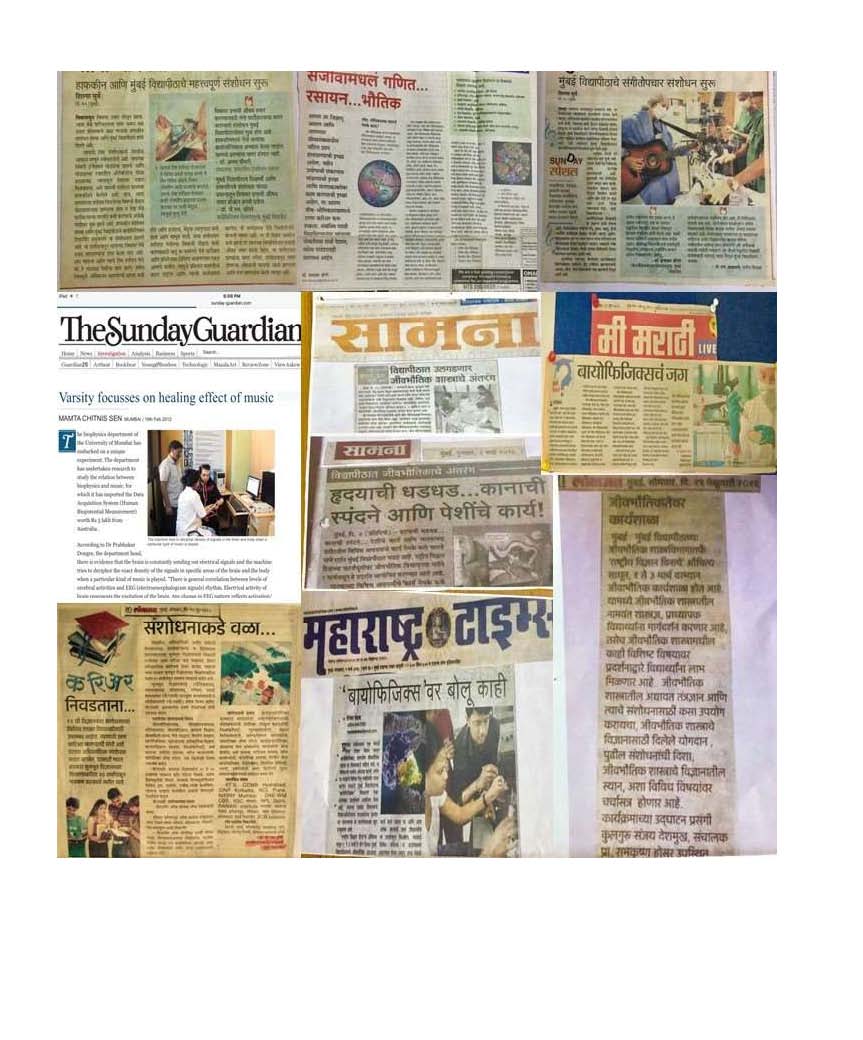 |

